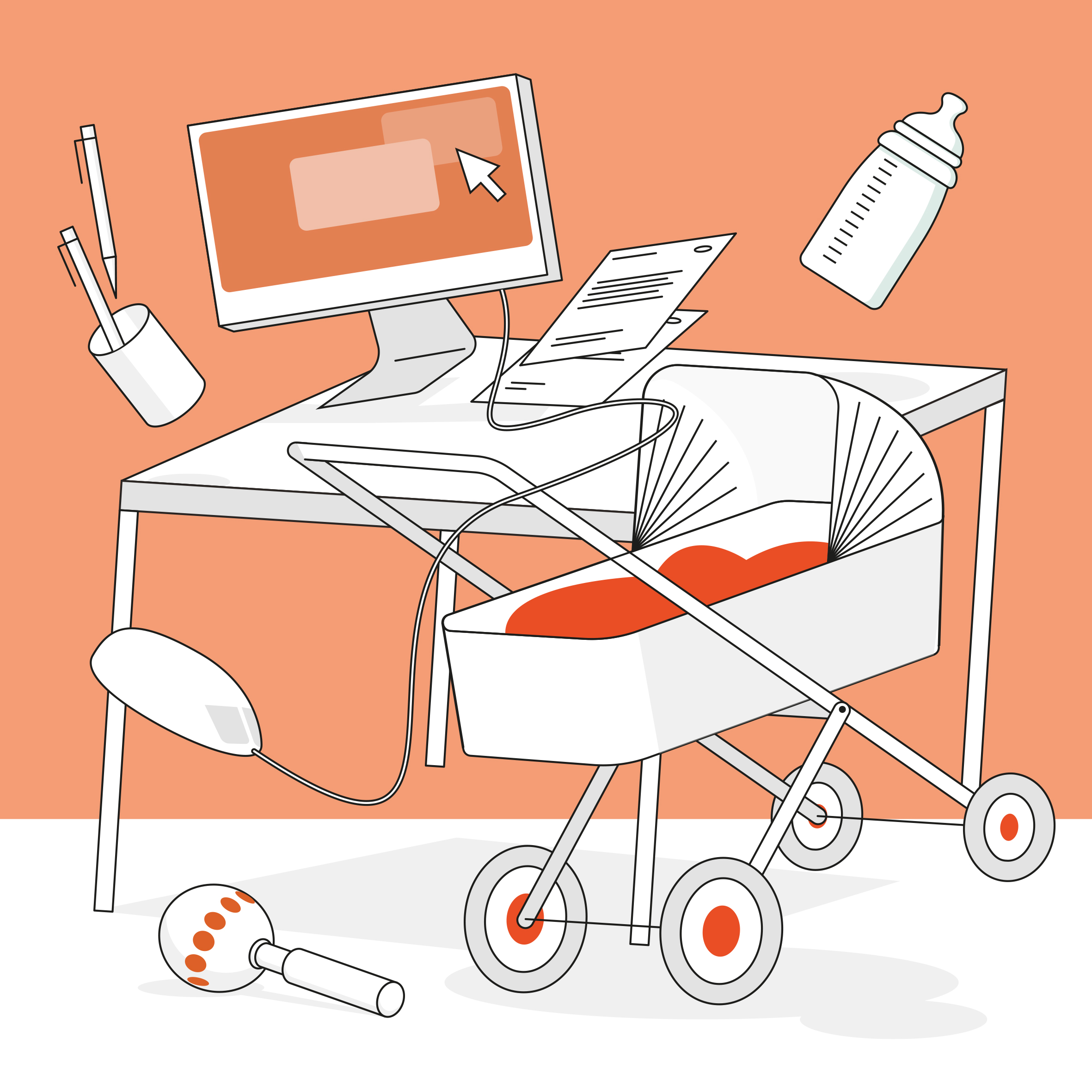Navigation auf uzh.ch
Navigation auf uzh.ch

American society has been experiencing an ideological polarization for several decades. The positions of the two parties on issues such as environmental protection, immigration, the welfare state or the protection of minorities are increasingly diverging, leaving fewer and fewer moderate voters who tend to be more progressive on some issues and more conservative on others.
What drives this polarization of politics and rise of populist parties? One explanation sees these developments as the result of increasing cultural contrasts within society. The values of the younger and more urban generations are oriented toward personal autonomy and social diversity, while older and more rural segments of the population emphasize traditional values such as family and religion. The increasing loss of the traditional order of values has triggered a cultural backlash, spearheaded by right-wing populist parties in support of the old order and against immigration and cultural mixing.
This shift in value orientations has been going on for decades, but why is it triggering such a significant backlash now?
Economic reasons for the backlash against changing social values
A recent study by David Dorn published in the American Economic Review shows that the economic decline of some American regions has contributed significantly to the polarization of politics.
Between 2000 and 2010, a dramatic wave of factory closures eradicated one-third of all jobs in the US industrial sector. Regions specializing in industries that could not withstand the growing import competition from China were hit particularly hard.
David Dorn and his co-authors examined the impact of these developments on congressional and presidential elections between 2000 and 2016. They find strong, though not definitive, evidence of an ideological shift in those regions and constituencies that were hit hardest by international trade. In some domains, the authors find an increase in ideological polarization, meaning expanding support for both strong-left and strong-right views, and pure rightward shifts in others.
A political shift to the right can be seen, for example, in the rising market share of the conservative TV channel Fox News, or in the increasing likelihood of electing Republicans to Congress. A polarizing shift can be seen in the campaign contributions as well as the profiles of elected members of Congress. Districts with a majority White population that were particularly affected by the factory closures were more likely to elect a politician from the right fringe of the Republican Party, while affected districts with large populations of Black and Latino voters were more likely to elect a liberal Democrat. In both cases, these polarizing shifts come at the expense of moderate Democrats. In the 2016 presidential election, votes from regions with high numbers of globalization losers shifted in favor of Donald Trump.

Better grades, just because of my fellow students? A new study shows for the first time that not only the grade point average, gender, or origin of the person sitting next to you or your study group in college can have an influence on your own performance, but also their personality. Our personality traits influence many important developments in our lives, such as success in education, income, career, and health. This influence has been widely researched. Less often, however, how our personality also affects our environment has been studied. So-called "peer effects" have already been studied with regard to characteristics such as gender, ethnicity, or school grades, but not with regard to personality traits. In his latest study, Ulf Zölitz examines this question in the context of education and asks: how does the character of my fellow students influence me?
The study follows students at a Dutch business university where all first-year students are divided into study groups at the beginning of their studies. The data collected are particularly suitable because students spend a lot of time in these study groups and all courses and groups are put together randomly by computer system. At the beginning of the study, four personality traits are surveyed from all students: self-confidence, timidity, risk-taking, and perseverance, the latter being understood primarily in the sense of conscientious or diligence – corresponding to the English "grit": someone with a lot of perseverance.
The results show that being surrounded by persistent fellow students has a positive effect on one's own performance. Furthermore, the results show that performance improves not only in the course studied, but also in courses taken later. This suggests that it is not course-specific knowledge that leads to improved performance, but transferable skills that benefit them later.
One explanation for the performance improvement is that students in the groups interact more with persistent fellow students than with others. To do this, all the students were asked about three people in their group with whom they interacted the most. Indeed, most interacted more with the persistent group members, learning that networking with people with a lot of perseverance can improve one's performance. As a result, they maintain more contacts with persistent individuals later on, and thus the positive effect persists over time.
This study shows that not only sociodemographic characteristics such as gender, origin, and grade point average of fellow students can have positive spillover effects, but also socioemotional characteristics such as personality. This finding implies that interventions that focus on mixing different characters can help reduce inequality in college.

Everyone remembers the pictures from 9/11, even if you were not there yourself. Today, the mass media and social networks confront us with an unprecedented abundance of images, be it terrorist attacks or other threatening situations. It is well known that indirect experiences of social threats trigger stress or maladjusted fears in us. Philippe Tobler examined whether and how these perceived social threats also influence our decision-making behavior.
Our reaction to social threats is the result of a learning process: in addition to learning directly, i.e. through our own experiences, we also learn indirectly, by observing others’ experiences. Such indirect observations can also be made via the media. Philippe Tobler examined the influence of observational learning on our decisions. His research shows that observational learning influences our decisions to a similar extent as learning through our own experience. In both cases, the influence on decisions occurs through the classical conditioning process, a well-established and simple form of learning. He also finds that seeing the threat, albeit via the media, has a stronger impact on the classical conditioning process, than only hearing about it, for example if somebody describes the threat to us verbally. These findings may help to better understand both adapted and pathological behavior people display after indirectly experiencing threatening events.

The myth that an employee on maternity leave is an economic burden for a company might be one of the reasons why women are still disadvantaged in their work life. While the effects of maternity leave on the child’s welfare and the mother’s well-being have been intensely studied, the consequences for the employer are less well documented. Anne Brenøe and her co-authors fill this gap with their research.
As smaller companies will presumably be more affected by the loss of a single employee, the researchers used data from Danish companies with less than 30 employees. Their analysis primarily shows that when an employee is absent due to maternity leave, opportunities arise for the other employees: they can temporarily increase their workload and therefore their salary or sometimes have the possibility to take on other tasks. In addition, their job security increases as the probability of being dismissed decreases. But there are also effects that benefit society as a whole, because companies temporarily hire additional employees, which has a positive effect on unemployment. No negative impact on the productivity or profit of the company could be observed, nor on the number of sick days of other employees. Since in Denmark, as in most European countries and also in Switzerland, maternity leave is covered by social security, there are no additional costs, but only opportunities to seize for the other employees and the company.

The WHO estimates that one in 13 children in sub-Saharan Africa will not live to see their fifth birthday. It is particularly frustrating that many of the diseases responsible for this could easily be prevented with modern medicine and technology. It is much less clear, however, how to do it cost-effectively an in a scalable way. Especially in rural areas, which are poorly served by the medical healthcare system, too little is known about cost-effective and scalable protection against malaria, diarrhea, and malnutrition.
Conventional aid programs may often fail because the incentives for health workers and administrators are not sufficiently strong. Two NGOs in Uganda have therefore set up a new program that combines basic health education with an entrepreneurial aspect: local healthcare promoters make home visits within their community and provide information on general hygiene measures, give simple medical advice, and refer more serious cases to the nearest health center.

What causes people to return a found wallet? The preservation of their own self-image, as an international study has shown. "People want to see themselves as an honest person, not as a thief. Keeping a found wallet means having to adapt one’s self-image, which comes with psychological costs," co-author Michel Maréchal explains the findings of the study. And, the more money there is in a lost wallet, the sooner it is returned to its owner. Keeping a more valuable wallet is more likely to be considered theft, and the "cost" of correcting one's self-image increases.
The authors of the study handed in more than 17,000 wallets at the reception desks of various institutions (hotels, banks, museums, post offices, or police stations). They found large differences between the 40 countries examined: In Switzerland, Norway, the Netherlands, Denmark and Sweden, between 70 and 85 percent of wallets were returned to their owners. In China, Peru, Kazakhstan and Kenya, on average only between 8 and 20 percent. But, in almost all countries, wallets with larger sums of money or valuable contents were more likely to be returned.

Innovation is usually regarded as something positive: it promotes the productivity of a society and stands for renewal, creativity, progress. However, David Hémous’ research has shown that innovation is also one of the main reasons for top income inequality: The one percent of the population that already claims a disproportionally large income share, becomes even richer.
David Hémous uses data from the different US states between 1975 and 2010 to show the causal relationship between innovation in a state and top income inequality, using the number of patents per capita to measure innovation. He showed that the increase in patenting can explain up to a quarter of the rise in the top 1% income share in the US. He was also able to identify several positive effects of innovation: overall income inequality is not affected and the effect of innovation on top income inequality is only temporary. While innovation augments the inventor’s income at first, eventually its benefits diffuse throughout the economy. Furthermore, innovation is also correlated with social mobility, the probability that children will be moving up in social rank compared to their parents, which also has a positive impact on society. Lobbying by established firms may dampen this effect: the efforts of incumbent companies to set the hurdles for innovations as high as possible has a negative influence on social mobility.

For decades Businesses, NGOs, and governments have been trying to convince farmers in developing countries to insure their crops. To date, with little success. This is mostly due to the fact that the insurance fee has to be paid at the beginning of the season. However, that is exactly the time when the farmers need money for equipment, seeds, machines and for feeding their families until harvest comes. Lorenzo Casaburi and his co-author Jack Willis (Harvard) have found an easy solution to raise the quota of insurances taken. They simply shifted the due date of the payment to harvest time. «By shifting the payment date to harvest time, we could raise the take-up rate of insurances from 5 percent to 72 percent», says Lorenzo Casaburi and adds: «additionally the demand among the poorest farmers increased the most». There is one hurdle left to take: «The farmers have to be able to rely on receiving the insurance benefit. And the insurers have to be sure that the farmers will sell their crop (after having deducted the insurance fee) to them and not to any other buyer». Link to paper

Over the last decades, the labor market has undergone fundamental change. While the demand for manual labor has decreased significantly, the number of workplaces requiring cognitive skills such as creativity, analysis and problem solving has risen.
This is primarily to the advantage of women. While in 1980 roughly 54% of the women with a college degree in the USA could expect to get a well-paid and highly qualified job, this figure rose to 59% by 2016. For men this percentage fell from 66% to 63%. At the same time the share of well-educated women who do not work decreased from 27% to 21%, while the share of men rose from 8% to 12%.
The main reason for the success of well-educated women is the change in requirements of highly qualified jobs. Social skills, empathy, communication, and the ability to recognize situations and emotions are increasingly in demand. «Psychological and neuroscientific research has shown that in these areas women have comparative advantages» says Nir Jaimovich, co-author of the study, and summarizes «In order to offer an added value in the digital future, the next generation will not only have to be technically skilled, but above all, be socially competent».

If we compare two people’s DNA, we see that over 99% of it is identical, and less than one percent of their strands vary. These unalike areas are called genetic variants and determine a person's individual characteristics, such as eye color or susceptibility to certain diseases.
An international group of scientists, including Pietro Biroli, Christian Zünd, and Ernst Fehr from the Department of Economics, identified 124 previously unknown genetic variants within 99 areas of the human genome, which are associated with a person’s willingness to take risks. “With this study we shed light on the genetic architecture of risk tolerance and can pinpoint where the propensity to risky behavior is located within our genome”, explains Pietro Biroli, who led the study analyses. "This does not mean, however, that we can say on the basis of DNA what risk a person will take in a particular situation. Whereas the link between the genetic variant and the outcome is very direct in the case of eye-color, it is often also influenced by environmental factors, as in this case.
It is one of the largest genetics studies to date, including information from over one million individuals, and is one of the first studies to link genetic variants with behavioral outcomes, which are relevant to social science research.